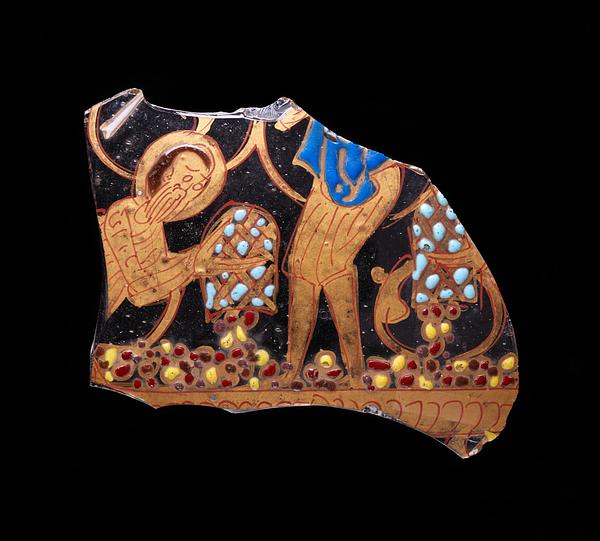This shard of glass has a curved shape indicating that it once formed part of a flask or some other rounded vessel. The convex side bears a painted figurative decoration executed in gold as well as blue, red, yellow, turquoise, brown and white enamel.
To the left is the torso and head of a bearded man pouring small ‘beads’ out of a wicker basket, and to the right is a similar basket held by a single hand. Between the containers are the legs of a third figure who appears to be wearing a loose-fitting, blue garment on their upper body. The image is presumably a depiction of wine production, the red and yellow ‘beads’ representing grapes crushed under the central figure’s feet.
Related scenes with various types of agricultural production are seen on a fully preserved, Syrian bottle from around 1250.
[1] Furthermore, depictions of workers crushing grapes with their feet are included in several manuscripts of al-Hariri’s
Maqamat, including one made in Syria between 1225 and 1235.
[2]As regards the portrayals of the figures, the halo surrounding the bearded man’s head and the remnants of the central figure’s blue, loose-fitting clothes clearly show a kinship with contemporary book illustration. For example, similar halos and richly folded costumes appear in a depiction of the Crucifixion in a Syriac Orthodox manuscript from the early thirteenth century (
19/2019) as well as in a representation of a medical consultation from a work on medicinal plants dated 1224 (
4/1997).
Although the halos were presumably inspired by Christian painting, the Islamic art of the period did not use them as a sign of holiness but instead as a means of highlighting the faces of the figures, whether religious or secular.
